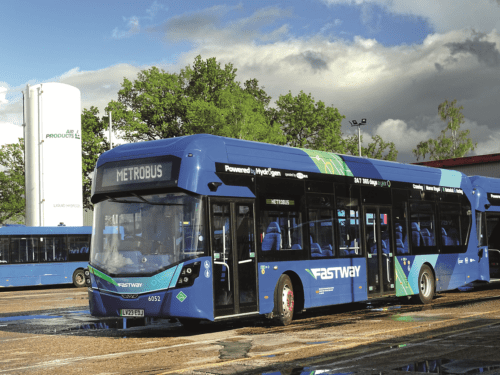
The launch of a new fleet of buses is always an exciting occasion for operators, drivers and passengers, but the launch of the fleet of new buses for the Fastway service in Crawley is even more exciting as the 20 buses are powered by hydrogen. Richard Sharman visited Metrobus to find out more
Zero-emission is a word that I have seemingly typed a couple of thousand times over the last few years, but it has nearly always been in relation to battery-electric vehicles (BEVs), and as exciting as going electric is, as an industry we have to remember that BEVs are by no means the solution for every operator in the UK, and some in the industry even question if electric is really going to be the sustainable choice for years to come.
On that point, whilst almost everyone is seemingly taking the BEV route, a few manufacturers and operators are breaking that mould and being early adapters of hydrogen technology, a technology that will almost certainly become commonplace as time goes on and more vehicles are developed.
In this feature we look at the bold move being made by Go-Ahead Group subsidiary Metrobus and its purchase of a fleet of Wrightbus GB Kite Hydroliners.
Hydrogen buses since 2010
Before we get to the new metal, it is well worth documenting the fact that Wrightbus, prior to Jo Bamford – who purchased the Ballymena bus manufacturer out of administration in October 2019 – introduced hydrogen buses into London way back in winter 2010.
Entering service on the Transport for London (TfL) RV1 route, two new 11.9m Eclipse Pulsar HEV-bodied VDL SB200 fuel cell buses began running, with a total of eight appearing on the road between 2010 and 2013. The introduction of those hydrogen buses was a collaboration between ISE, Wrightbus, Ballard and Air Products, with the buses being operated by Tower Transit.
[…]By subscribing you will benefit from:
- Operator & Supplier Profiles
- Face-to-Face Interviews
- Lastest News
- Test Drives and Reviews
- Legal Updates
- Route Focus
- Industry Insider Opinions
- Passenger Perspective
- Vehicle Launches
- and much more!


